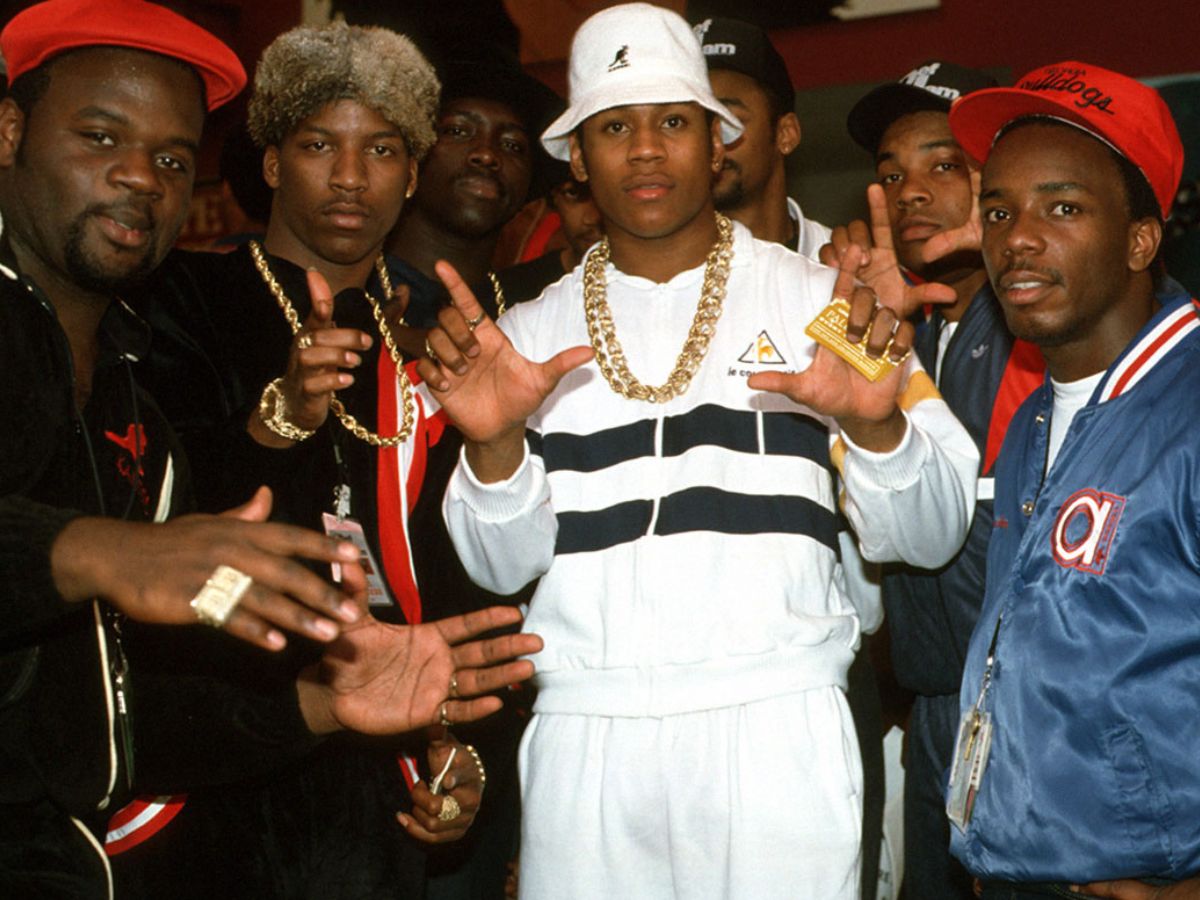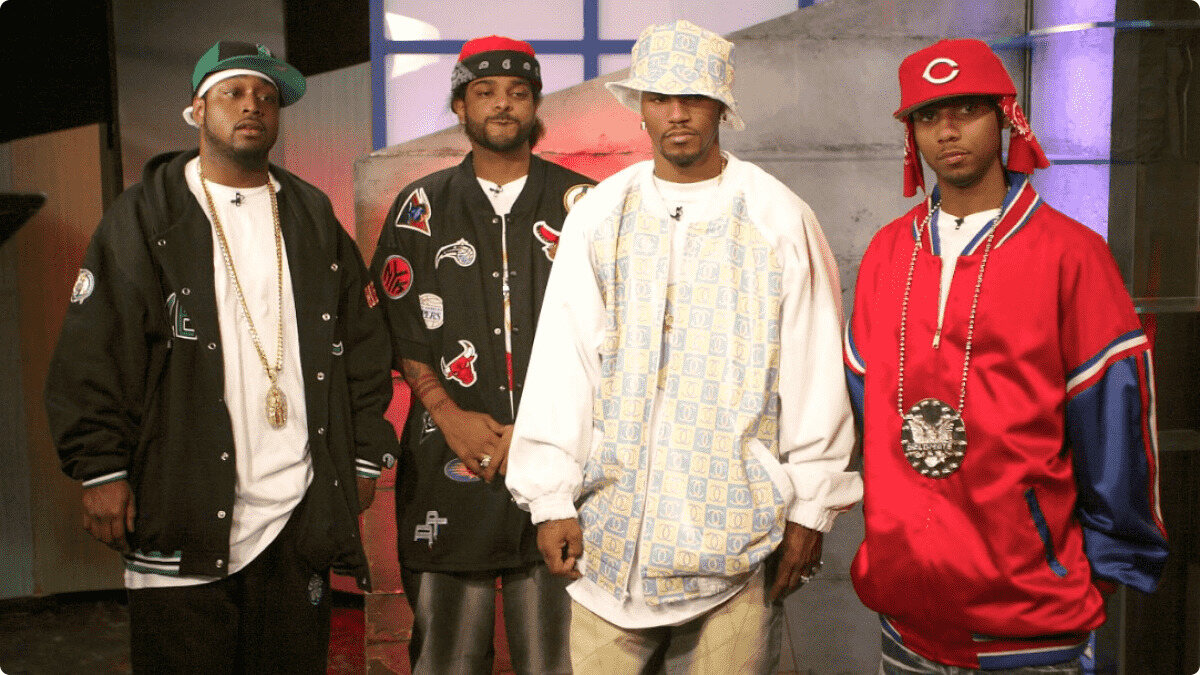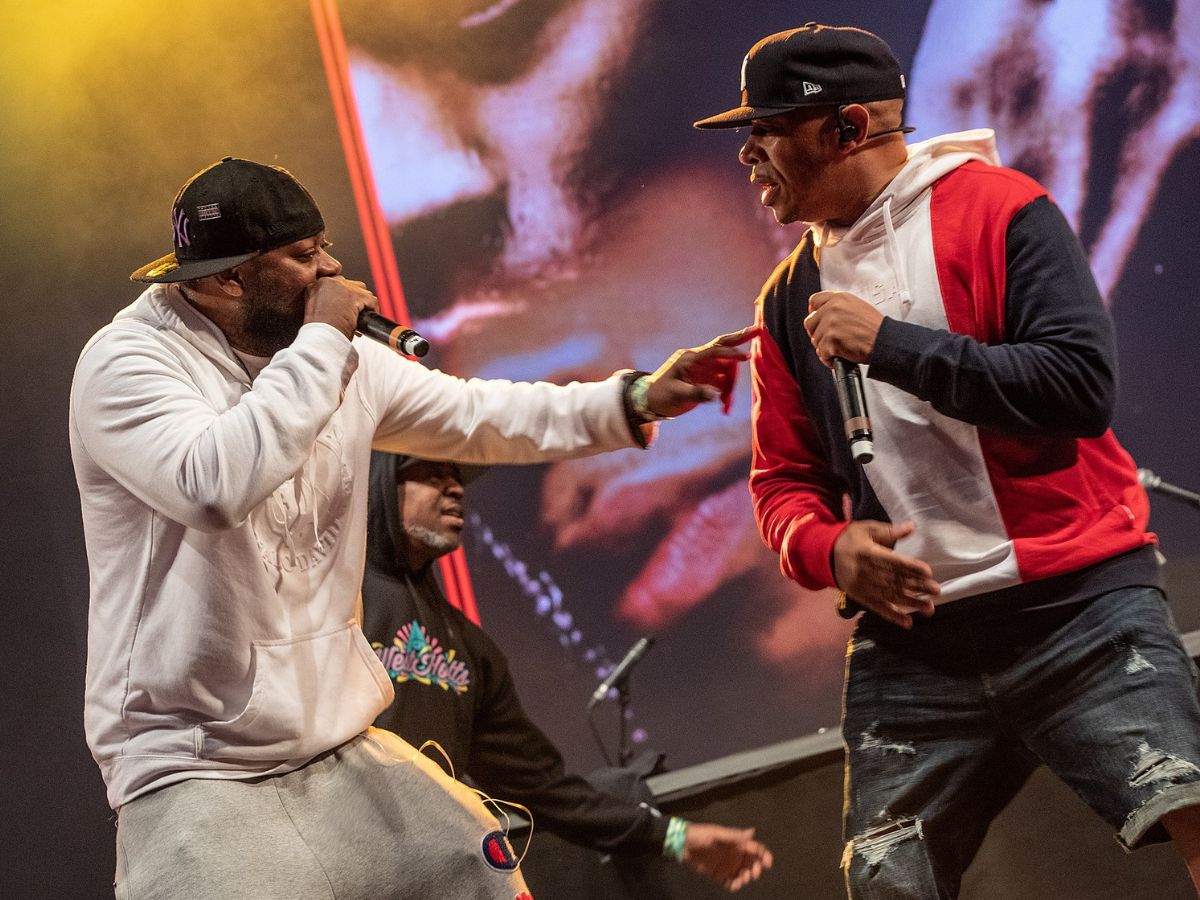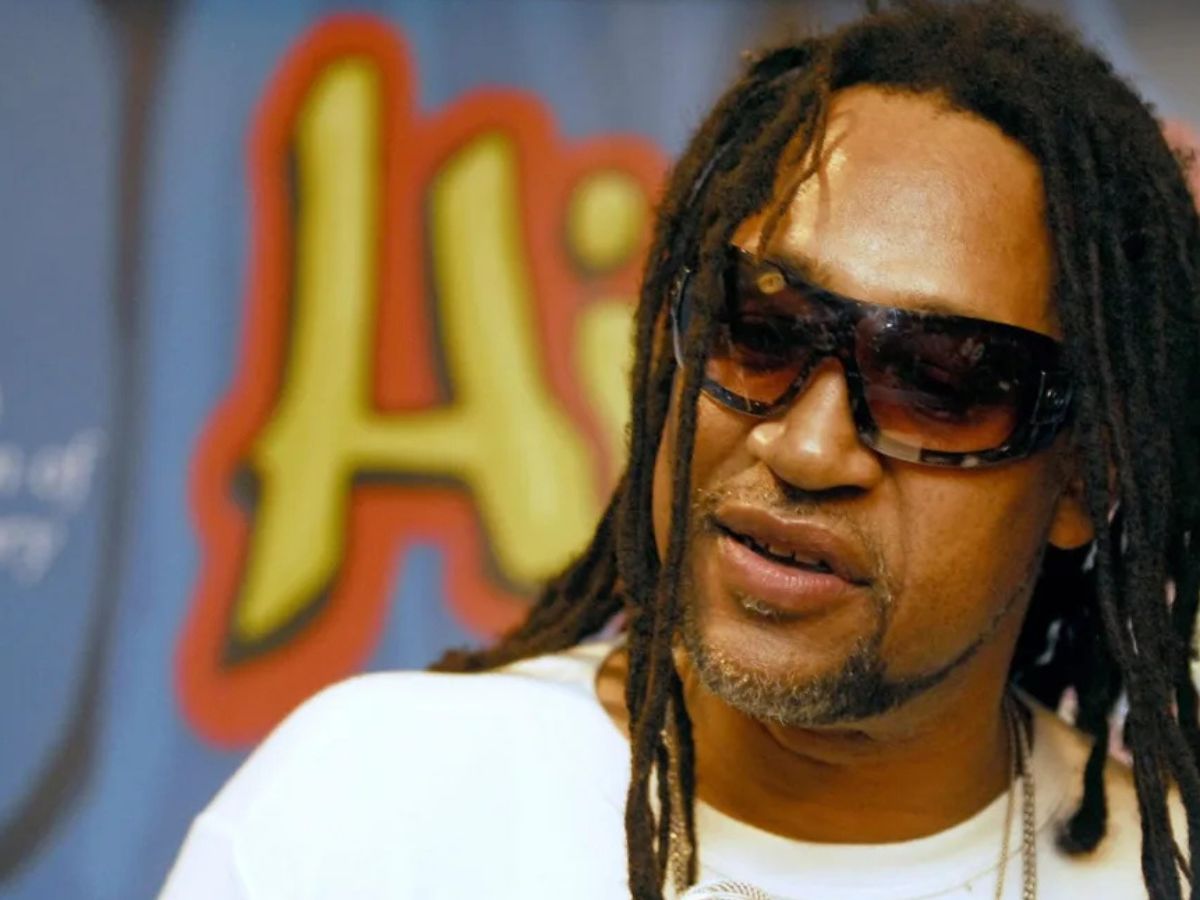

Hip Hop
How Was 90S Hip Hop Made
Modified: January 22, 2024
Discover the origins and production techniques behind 90s Hip Hop in this informative guide. Uncover the creative process and influential artists that shaped the genre.
(Many of the links in this article redirect to a specific reviewed product. Your purchase of these products through affiliate links helps to generate commission for AudioLover.com, at no extra cost. Learn more)
Table of Contents
Introduction
Hip hop is a genre of music that emerged in the Bronx, New York, during the 1970s. However, it was the 1990s that saw the genre reach new heights and solidify its place in music history. The ’90s was a golden era for hip hop, with groundbreaking artists, iconic albums, and unforgettable hits that continue to influence the music industry today.
The rise of 90s hip hop can be attributed to several factors. One of the key elements was the cultural and social context of the time. The 90s were characterized by a sense of rebellion and disillusionment among young people, particularly those from marginalized communities. Hip hop provided an outlet for self-expression and a platform to address social issues such as racism, poverty, and inequality.
Moreover, the 90s witnessed the emergence of incredibly talented artists and groups who pushed the boundaries of hip hop. Acts like Tupac Shakur, The Notorious B.I.G., Wu-Tang Clan, Nas, and Lauryn Hill became household names and created a sound that resonated with audiences worldwide. Their raw lyricism, storytelling prowess, and unique styles set the foundation for the genre’s evolution.
During this era, hip hop also saw an infusion of diverse influences from various musical genres. Artists incorporated elements of funk, soul, jazz, and R&B into their sound, creating a fusion that appealed to a wider audience. This cross-pollination of genres not only expanded the sonic palette of hip hop but also added depth and richness to the music.
Another distinguishing feature of 90s hip hop was the innovative use of sampling. Producers adeptly sampled snippets of classic songs and transformed them into signature beats that defined the era. These samples added a nostalgic touch to the music, resonating with both new and old listeners alike.
In terms of production techniques, the 90s introduced advancements in equipment that revolutionized the way hip hop music was made. Artists embraced drum machines, samplers, and synthesizers, enabling them to create intricate and layered compositions. This newfound technical prowess allowed for greater experimentation and creativity in the studio.
Origins of 90s Hip Hop
The roots of 90s hip hop can be traced back to the 1970s, when DJs in the Bronx began experimenting with mixing beats and rhythms to create a unique sound. This early form of hip hop was primarily driven by breaks, which were brief instrumental sections of songs that had a strong beat and were ideal for dancing.
As hip hop evolved throughout the 1980s, it started gaining mainstream attention and popularity. Artists like Run-DMC, Grandmaster Flash and the Furious Five, and Public Enemy paved the way for the genre’s expansion and success. By the 1990s, hip hop had become a powerful cultural force, influencing not only music but also fashion, art, and language.
The 90s marked a transition from the old-school, party-oriented approach of the 80s to a more introspective and socially conscious style. Artists began delving deeper into personal experiences and societal issues, using their lyrics to shed light on the harsh realities of urban life.
One of the driving forces behind the shift in hip hop’s direction was the rise of gangsta rap. Originating on the West Coast with artists like N.W.A and Ice-T, gangsta rap provided a raw and unfiltered glimpse into the realities of street life. It addressed themes such as police brutality, gang violence, and the struggles of the inner city.
On the East Coast, a parallel movement known as conscious rap emerged. Artists like A Tribe Called Quest, De La Soul, and Common used their music to promote positive messages, highlight social injustices, and celebrate Black culture. With thought-provoking lyrics and socially conscious themes, they brought a new level of depth and complexity to hip hop.
Another significant development in the origins of 90s hip hop was the growing influence of independent record labels. With major labels often overlooking the genre, up-and-coming artists sought out alternative avenues to get their music heard. Independent labels like Rawkus Records and Duck Down Music provided a platform for underground talent to flourish and gain recognition.
In summary, the origins of 90s hip hop can be traced back to the experimental beats of the 1970s and the progression of the genre throughout the 80s. The decade of the 90s saw hip hop evolve into a powerful cultural force, with artists exploring new sounds, pushing boundaries, and addressing important social issues. The emergence of gangsta rap and conscious rap, along with the influence of independent record labels, set the stage for the golden era of 90s hip hop.
The Golden Era of 90s Hip Hop
The 1990s is widely regarded as the golden era of hip hop, a time when groundbreaking artists and iconic albums reshaped the landscape of the genre. During this period, hip hop experienced a surge in creativity, lyrical prowess, and cultural impact, cementing its influence in the music industry.
One of the defining characteristics of the golden era was the emergence of legendary artists whose impact continues to be felt today. The Notorious B.I.G., also known as Biggie Smalls, burst onto the scene with his debut album “Ready to Die” in 1994. With his smooth flow, vivid storytelling, and larger-than-life persona, Biggie became an icon of 90s hip hop.
Another influential figure of the era was Tupac Shakur, whose raw emotion, powerful lyrics, and charisma captivated audiences. Known for hits like “California Love” and “Changes,” Tupac’s impact extended beyond music, making him a cultural icon. His untimely death in 1996 further solidified his status as a legend.
Wu-Tang Clan, a collective of nine talented emcees, brought a new level of innovation and rawness to hip hop. Their debut album, “Enter the Wu-Tang (36 Chambers),” introduced the world to their gritty New York sound, intricate wordplay, and distinctive production style. The group’s impact on hip hop culture cannot be overstated.
The 90s also witnessed the rise of female artists who made significant contributions to the genre. Lauryn Hill, both as a member of The Fugees and through her solo work, showcased her impeccable songwriting skills, soulful vocals, and thought-provoking lyrics. Her album “The Miseducation of Lauryn Hill” became a classic and remains one of the most influential albums in hip hop.
Additionally, the decade saw the release of numerous iconic albums that pushed the boundaries of hip hop. Nas’s “Illmatic” is often hailed as one of the greatest albums in the genre’s history, with its poetic lyricism and cinematic storytelling. Dr. Dre’s “The Chronic” revolutionized West Coast hip hop with its G-funk sound and production.
The golden era of 90s hip hop also witnessed the rise of collaborations and supergroups. artists came together to form dynamic collectives, resulting in innovative and genre-blurring projects. The Fugees, consisting of Lauryn Hill, Wyclef Jean, and Pras Michel, blended hip hop, soul, and reggae influences, creating a unique and captivating sound.
Overall, the golden era of 90s hip hop was a time of artistic innovation and cultural impact. It produced some of the most influential artists, albums, and hits that continue to inspire and shape the hip hop landscape today. The creativity, lyricism, and diverse range of sounds during this era solidified hip hop as a force to be reckoned with in the music industry.
Influences on 90s Hip Hop
90s hip hop was not only shaped by the artists within the genre but was also heavily influenced by a wide range of musical styles and cultural movements. These influences helped to create the diverse sounds and innovative approaches that defined the era.
One of the major influences on 90s hip hop was the funk and soul music of the 1970s. Artists like James Brown, Parliament-Funkadelic, and Curtis Mayfield provided the foundation for many hip hop samples during this time. Their infectious grooves, instrumentals, and catchy melodies were reimagined and incorporated into the beats and rhythms of hip hop tracks, adding a nostalgic and soulful element to the music.
Additionally, R&B and soul acts of the 90s played a significant role in shaping the sound of hip hop during this period. Acts like Mary J. Blige, TLC, and Aaliyah influenced the production and lyrical themes of hip hop songs. The smooth, melodic vocals and romantic themes of R&B intersected with the rawness and storytelling of hip hop, creating a unique fusion that resonated with audiences.
Jazz was another important influence on 90s hip hop, particularly in the realm of conscious rap. Artists like A Tribe Called Quest, De La Soul, and The Pharcyde incorporated jazz samples and live instrumentation, infusing their music with a sophisticated and laid-back vibe. The improvisational nature of jazz allowed for experimentation, resulting in innovative beats and unique sonic textures.
Reggae and dancehall music from the Caribbean also had a significant impact on 90s hip hop, especially in the realm of West Coast hip hop. Artists like Dr. Dre and Snoop Dogg drew inspiration from the reggae-influenced sound of artists like Bob Marley and Dennis Brown, infusing their music with elements of the genre. This fusion of hip hop and reggae brought a fresh and eclectic flavor to the music.
Furthermore, the socio-political climate of the 90s influenced the lyrical content and themes of hip hop. The rising awareness of issues such as police brutality, racial inequality, and economic disparities fueled a wave of socially conscious rap. Artists like Public Enemy and Chuck D used their platform to shed light on these issues, inspiring a generation to critically analyze and challenge the status quo.
In summary, 90s hip hop drew inspiration from various musical genres and cultural movements. The funk and soul of the 1970s, the smooth melodies of R&B, the improvisational nature of jazz, the infectious rhythms of reggae, and the socio-political climate of the time all played a role in shaping the sound, production, and lyrical themes of the era. These influences contributed to the diversity and innovation that made 90s hip hop a transformative force in music.
Sampling Techniques in 90s Hip Hop
Sampling played a crucial role in the creation of the distinct sound of 90s hip hop. It involved taking snippets of pre-existing recordings, often from different genres, and incorporating them into new compositions. This technique allowed artists to pay homage to their musical influences, add depth to their tracks, and create a nostalgic and familiar feel for listeners.
In the 90s, sampling techniques reached new heights of creativity and innovation. Producers and artists dug deep into record crates, exploring a wide range of genres, from funk and soul to jazz and rock. They meticulously selected samples that had a distinctive sound, catchy melodies, or captivating instrumentals.
One of the key aspects of sampling in 90s hip hop was the art of finding the perfect breakbeat. Breakbeats are brief sections of songs that feature a drum break, often containing a rhythmic pattern that is ideal for looping and creating the foundation of a hip hop track. Producers would search for obscure vinyl records, seeking those hidden gems with breakbeats that could be the driving force behind their beats.
Once a suitable sample was found, it was time for the creative manipulation to begin. Producers would use samplers and drum machines to isolate and extract the desired sections of the sample. With the advent of digital technology, sampling became more precise and efficient, allowing for intricate edits and rearrangements.
Chopping and slicing the sample was a technique commonly used to create unique patterns. Producers would break down the sample into smaller fragments and rearrange them to create distinct rhythms and melodies. This process involved careful timing and sequencing to ensure that the samples seamlessly blended together to form a cohesive composition.
Layering multiple samples was another technique utilized in 90s hip hop production. Producers would combine different samples, each with its own unique sound and character, to create a textured and rich sonic landscape. This layering of samples added depth and complexity to the music, enhancing its overall impact.
Effect processing was also applied to samples to further enhance their sonic qualities. Techniques such as filtering, equalization, and pitch-shifting allowed producers to modify the characteristics of the samples, bringing them more in line with the desired aesthetic of the track. These effects helped to create a cohesive and polished sound.
The creativity and skill in sampling techniques showcased the artistry of producers and their ability to transform pre-existing recordings into new and original compositions. The unique blend of samples, breakbeats, and innovative editing techniques defined the sound of 90s hip hop, creating a sonic landscape that continues to be celebrated and revered to this day.
Production Equipment and Techniques
The production of 90s hip hop was not only driven by talented artists and inventive sampling techniques but also heavily influenced by the advancements in production equipment and techniques. These tools enabled producers to shape the sound and create the iconic beats that defined the era.
One of the key advancements in production equipment during the 90s was the use of drum machines. Drum machines, such as the iconic Roland TR-808 and TR-909, allowed producers to program and sequence drum patterns with precise control and consistency. These machines provided the foundation for the rhythmic elements of hip hop tracks, bringing a distinct and recognizable sound to the music.
Another pivotal piece of equipment in 90s hip hop production was the sampler. Samplers, like the Akai MPC series, revolutionized the way beats were created. Producers could digitally sample and manipulate sounds, giving them the ability to manipulate the pitch, tempo, and tone of samples. This flexibility allowed for endless creative possibilities in constructing beats and arranging samples.
The advent of digital recording technology also played a significant role in the production of 90s hip hop. Digital audio workstations (DAWs), such as Pro Tools, became increasingly accessible and allowed producers to record, edit, and mix their tracks with unprecedented ease and precision. This shift from analog to digital recording brought greater control over the production process and accelerated the creative workflow.
The use of synthesizers in 90s hip hop production added a layer of versatility and experimentation. Synthesizers like the Yamaha DX7 and the Ensoniq ASR-10 brought new textures and sounds to the genre, enabling producers to create unique and captivating melodies. This integration of synthesizers expanded the sonic palette of hip hop and contributed to its distinctiveness.
Techniques such as layering sounds and creating intricate arrangements were made possible through multi-track recording. With the ability to record multiple sound sources separately, producers could layer instrumentals, vocals, and effects, resulting in rich and complex compositions. This layering allowed for greater depth and complexity in the production, enhancing the overall sonic experience.
Additionally, the use of effects processors and sound modules added depth and polish to the tracks. Producers could apply reverbs, delays, and other effects to individual sounds or the overall mix, adding ambiance and character. These effects played an instrumental role in shaping the atmosphere and mood of the music.
In summary, the production of 90s hip hop was shaped by the use of drum machines, samplers, synthesizers, digital recording technology, and various effects processors. These advancements in equipment, paired with innovative techniques such as layering, multi-track recording, and sound manipulation, allowed producers to construct intricate and captivating beats. The tools and techniques utilized during this period contributed to the unique and influential sound of 90s hip hop.
Lyrics and Storytelling in 90s Hip Hop
One of the defining characteristics of 90s hip hop was its emphasis on powerful lyrics and storytelling. Artists during this era utilized their lyrics as a platform to express their thoughts, share personal experiences, and shed light on social issues. The storytelling prowess displayed in the lyrics of 90s hip hop not only captivated audiences but also solidified the genre’s place as a form of artistic expression.
Lyrics in 90s hip hop often delved deep into personal experiences, hardships, and struggles. Artists like Nas, Tupac Shakur, and The Notorious B.I.G. used their lyrics to vividly portray the realities of street life, offering a glimpse into the harsh environments in which they grew up. Through their storytelling, they painted pictures with words, transporting listeners into their world.
Moreover, these artists tackled social issues head-on. Conscious rap groups like Public Enemy and A Tribe Called Quest used their lyrics to address racism, police brutality, and systemic inequality. They brought awareness to these issues, sparking conversations and inspiring listeners to critically examine and challenge the status quo.
Metaphors, wordplay, and intricate rhyme schemes were also prominent features of 90s hip hop lyrics. Artists like Rakim, Mos Def, and Big L showcased their lyrical prowess, delivering clever and poetic lines that required careful listening to fully appreciate. These intricate rhyme patterns added depth and complexity to the lyrics, elevating the artistry of the genre.
In addition to personal experiences and social commentary, storytelling played a vital role in 90s hip hop. Artists crafted narratives within their songs, weaving compelling tales that resonated with listeners. Slick Rick’s “Children’s Story” and Nas’s “Rewind” are prime examples of how storytelling can be masterfully executed in hip hop. These stories allowed artists to transport listeners into different narrative worlds, engaging them emotionally and immersing them in the music.
Collaborations between artists further enhanced the storytelling aspect of 90s hip hop. Tracks like Dr. Dre and Snoop Dogg’s “Nuthin’ but a ‘G’ Thang” or The Fugees’ “Ready or Not” brought together multiple perspectives and narratives, adding richness and depth to the storytelling within the songs.
The lyrical and storytelling prowess displayed in 90s hip hop not only entertained but also inspired and empowered listeners. The honest and raw narratives, coupled with the artistic and poetic use of words, created a connection between artists and audiences. Through their lyrics, artists became storytellers, weaving tales that resonated with the struggles, dreams, and aspirations of their listeners.
Impact of 90s Hip Hop on Popular Culture
The impact of 90s hip hop on popular culture cannot be overstated. It was a transformative era that redefined not only the music industry but also fashion, language, and attitudes. The influence of 90s hip hop continues to resonate today, shaping the cultural landscape in profound ways.
One of the major contributions of 90s hip hop to popular culture was the rise of urban fashion trends. Artists like Notorious B.I.G., TLC, and Aaliyah became style icons, showcasing unique and bold fashion choices. Baggy jeans, oversized jerseys, bucket hats, and gold chains became synonymous with the hip hop aesthetic. Brands like FUBU, Tommy Hilfiger, and Wu-Wear gained popularity as they were embraced by hip hop artists and fans alike.
Furthermore, 90s hip hop had a significant impact on language and slang. Artists introduced new words, phrases, and expressions into mainstream culture, influencing the way people talked and communicated. Expressions like “word,” “fly,” “dope,” and “phat” became part of everyday vernacular, crossing over from the hip hop community into the broader society.
Additionally, 90s hip hop served as a vehicle for social commentary and activism, amplifying marginalized voices and addressing social issues. Artists like Public Enemy, Lauryn Hill, and Tupac Shakur used their music to address racism, police brutality, and systemic inequality. Their powerful messages resonated with listeners, inspiring them to question societal norms and strive for positive change.
The sampling techniques employed in 90s hip hop also had a profound impact on popular culture. The use of samples from various genres introduced younger generations to the music of past eras. Classic soul, funk, and jazz records were rediscovered and experienced in a new context, sparking interest and appreciation for these musical genres among hip hop fans.
Moreover, 90s hip hop brought diversity and representation to the forefront of popular culture. Artists from different backgrounds and regions emerged, showcasing the rich tapestry of experiences within the genre. This emphasis on diversity paved the way for future generations to embrace their unique identities and voices, inspiring inclusivity in the music industry.
The impact of 90s hip hop on popular culture extended beyond music and fashion. It provided a platform for marginalized communities to have their stories heard and their experiences validated. It challenged societal norms, pushed boundaries, and fostered a sense of empowerment and self-expression among its followers.
In summary, 90s hip hop left an indelible mark on popular culture. It transformed fashion, language, and attitudes, and brought social issues to the forefront. Through its sampling techniques, lyrical storytelling, and emphasis on diversity, 90s hip hop broke barriers and empowered communities. Its influence continues to shape the cultural landscape and serves as a testament to the power of music to inspire and effect change.
Conclusion
The 1990s was a remarkable era for hip hop, characterized by groundbreaking artists, influential albums, and innovative production techniques. It was a time of immense creativity and cultural impact, leaving a lasting legacy on the music industry and popular culture as a whole.
The origins of 90s hip hop can be traced back to the Bronx in the 1970s, where DJs experimented with mixing beats and rhythms to create a unique sound. However, it was during the 90s that hip hop truly came into its own, with artists pushing boundaries and addressing social issues through their music.
The golden era of 90s hip hop saw the rise of iconic artists like The Notorious B.I.G., Tupac Shakur, and Wu-Tang Clan, whose impact continues to be felt today. Their lyrical prowess, storytelling abilities, and distinct styles set the standard for the genre and inspired future generations.
90s hip hop was heavily influenced by various musical genres, such as funk, soul, jazz, and reggae. Producers skillfully sampled these genres, creating unique beats and adding a nostalgic touch to the music. The advances in production equipment, including drum machines, samplers, and synthesizers, also played a crucial role in shaping the sound of the era.
Lyrical content and storytelling became the backbone of 90s hip hop, with artists delving into personal experiences, social issues, and crafting compelling narratives. The genre’s impact on popular culture was far-reaching, influencing fashion, language, and attitudes. It amplified marginalized voices, led to the rediscovery of classic music, and brought diversity and representation to the forefront.
In conclusion, 90s hip hop was a transformative era that revolutionized the music industry and left an indelible mark on popular culture. Its artistic and creative achievements continue to inspire and shape the world of music today. The legacy of 90s hip hop serves as a testament to the power of music as a platform for expression, storytelling, and social change.











